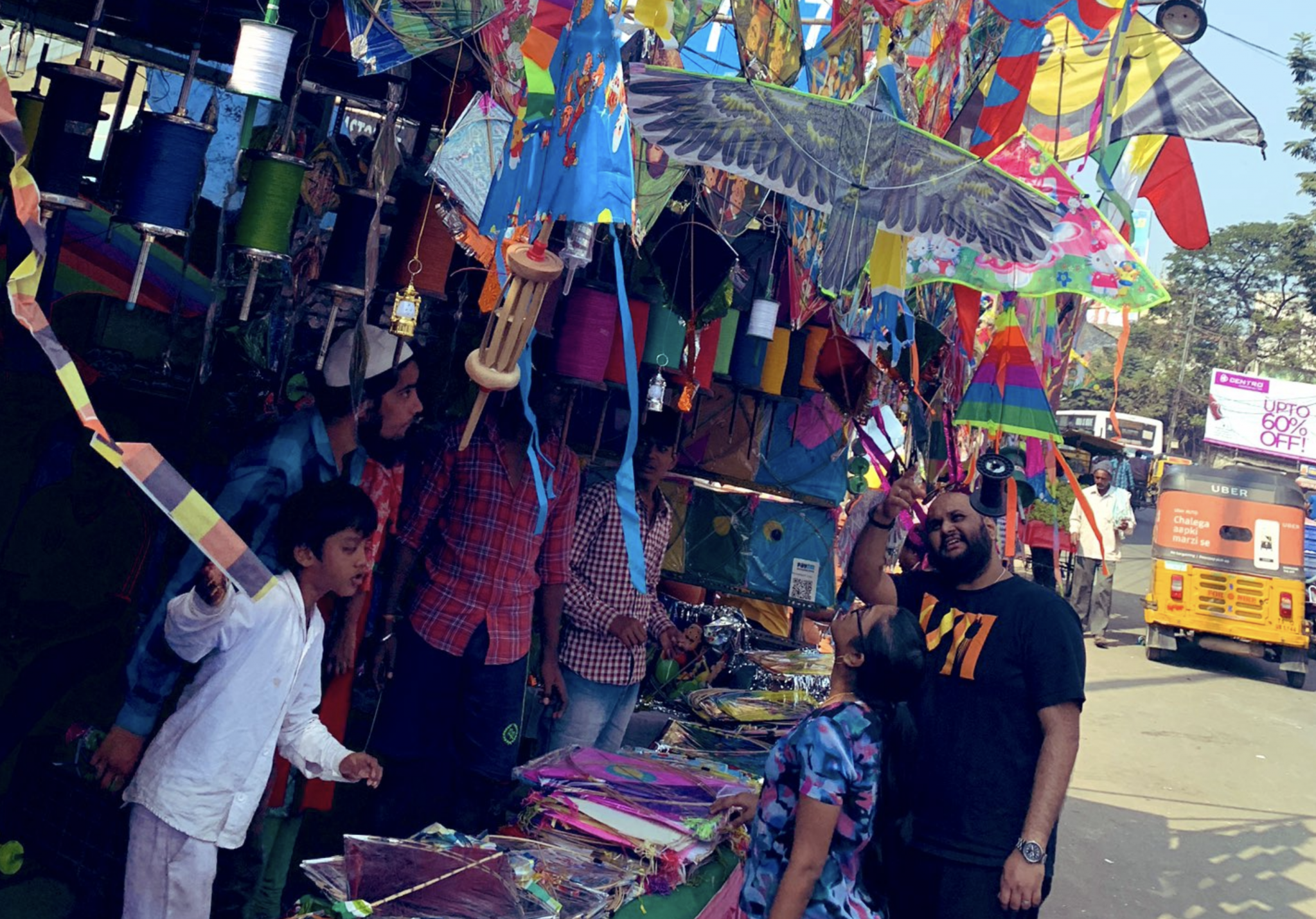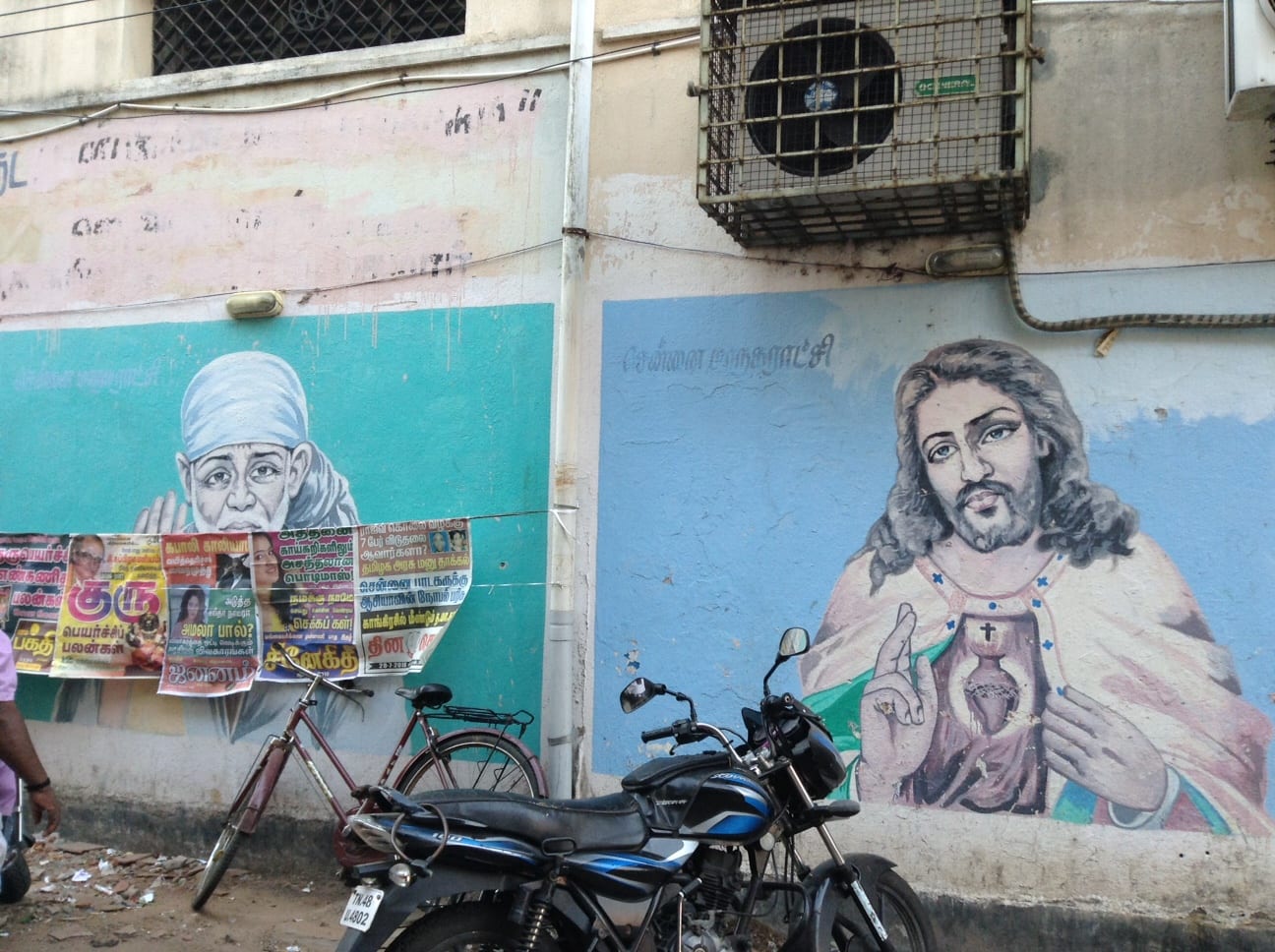For whom do the kites fly? During our days in Hyderabad, over the cool of the HMI compound which shielded us like a leaky box from the dust and exhaust of the city, their number increased each day. At first only a few could be seen through the thick smog that cloaked the Sivaramapalli neighborhood. But as the yellow moon ticked nightly from nearly new to full there were more and more all the time until they seemed to be everywhere, straining and floating off of every building, dead or exhausted in nearly every tree, visible everywhere by the time we climbed the Venkateswara temple hill and turned around slowly on its marble top, peering through the thick brown air at the city below. A city of kites. But why we saw more and more each day I did not know.

Kites and birds before dusk
It was nearly the time of Thai Pongal, (aka Sankranthi, aka Uttarayana aka Maghi) the great Hindu festival of the harvest and thanksgiving that marks the slow return of longer days. A Telegana government tourism pamphlet which I read during a long and somewhat torturous bus ride stated with no elaboration that Sankranthi was a traditional time for “kite flying joy.” Was it therefore a killjoy or trickster (or worse, a sectarian agitator) who made fake-news headlines by falsifying a Hyderabad police press release so that it appeared to announce a complete kite ban during the festival in order or preserve “law and order, peace and tranquillity”?
Meanwhile, on the streets of Hyderabad, a crush of cars, scooters, animals, busses, motorcycles, pedestrians, bicycles, trucks, mobile vending stalls, police vehicles, 7-in-alls, auto-rickshaws, tourbusses and the occasional oxcart made it immediately obvious to us that there was little law, order, peace or tranquility to preserve. Our HMI hosts taught us to cross the road. The chaos must be traversed with a steady, serene and predictable gait. This allows the motorcyclists and autos to part around the pedestrian like schools of fish. One must never dart, leap or do anything at all sudden or unexpected. They demonstrated. We followed.

wall of motorcycles
Some of us developed volcanic coughs from the exhaust and poor air. Coughing became a background noise, like the hum of traffic, or the clanging of bells, or car horns or the call to prayer . At night, coughing in my room, I thought at times of one beloved to me back home. A few years ago in the spring she’d started coughing and never stopped. Doctors removed the cancerous lung, but she died nonetheless: a proud, defiant and loving woman brought low by smoke. I read that life expectancy in Delhi was reduced by ten years on average due to pollution. It could hardly be better in Hyderabad.
At the memorial for my loved one, I stood shivering on an atypically clear and cool autumn night in Seattle as family and friends released three sky lanterns. They floated up quickly, becoming hard to spot and small against the other night lights of the city — airplanes, planets, strange glows. In Hyderabad these are called Tukkals, and are used as tethered kites, especially at this time of year:
Though the flocks of kites seemed to swell in accordance with the filling moon, Sankranthi — unusually for a Hindu holiday — is determined by the return of the sun. For this reason it almost always falls on January 14th. In much of India the sun is deified as Surya , a blazing god seated in a chariot pulled by seven horses for the seven components of light or the seven days of the week. On the 14th in Hyderabad we could almost look at the god-sun directly, dim in his kite-dotted sky above a thick blanket of brown smudge. At night, the smog remained, but became invisible — revealed only by the tint it gave to the moon. In my room, I imagined the kites asleep under the beds of the children of Hyderabad — those that had beds. The kites slept soundly, but the children could not, anticipating the holiday. As they lay awake, they coughed, but covered their small mouths with both hands to prevent disturbance.
Who is the god of kites? Is it Surya, king of Pongal, triumphant in return and plenty? Is it Chandra, the holy silent moon? Or do the kites serve only to recall some former time in the Deccan, before empire, before Hinduism, before anything we remember, before anything at all? (This is not a ridiculous idea — such phenomena exist in India, unexplained, ancient and in plain sight.) And what is Allah the Merciful’s role in all of this? After all in this city Muslim kids fly kites with just as much passion as their Hindu compatriots.
Each human culture is in part defined by the way it divides and separates. How it says this is not that. Each culture constructs a system for defining the holy and the profane, for dividing the pure from the defiled, the private from the public, the living from the dead, the permissible from the forbidden. The cycles of the year tell us when this division happens, when its various rules must be enforced with special vigor, and when they can be relaxed. The rhythms of the cycles are ruled by the moon or the sun: Surya and Chandra. Perhaps these two are rivals, competing for the hearts and calendars of the people below them. Or maybe they are like parents, taking turns watching in various degrees of sorrow or joy over their children in the city. Some Hindus regard them as brother and sister, children of some other, further parent.
I prefer to think that the kites are ruled by no god. I prefer to think that they belong to the children of the city, and to them alone. Maybe Hyderabad’s kites are a human flock: each new generation’s way of searching into the above, past the smog and into a sanctified, separated realm where they’ve been told that God is supposedly found. The heavens: the inverted garbhagriha of the sky — a word that means “inner sanctum”, but also (literally translated) “womb chamber.” I prefer to think that it is religion-less, this instinct: that when the time of “kite flying joy” approaches once more, each child of the city is compelled by forces neither seen nor understood to stride serenely across the busy road to the kite stall, to climb to the top of the nearest building, and from there, to fly.

a kite stall
